Getting On Power
Published: February 4, 2013; updated: January 16, 2018
In this installment of Driving Technique we will discuss getting on power, primarily at corner exit. While stepping on the gas pedal might appear trivially simple, the details are rather firmly in intermediate driver territory.
Basics
The typical1 corner, for a novice driver, is composed of three distinct parts:
- Braking
- Turning (no power and no brakes, car is coasting, constant turn radius turn in to track out)
- Acceleration (in a straight line, turning is finished)
After the driver eliminates early apexes and learns to unwind steering, the corner becomes:
- Braking
- Turning in (no power, no brakes, car is coasting, constant turn radius turn in to apex)
- Apex
- Tracking out under power (unwinding steering, getting on power)
- Flat out acceleration in a straight line
Today we are going to talk about tracking out under power.
Getting On Power Early
An important indicator of driver skill for intermediate level drivers is when the driver is getting on power. A novice driver applies power past track out point; an intermediate driver should be applying power somewhere between apex and track out point, getting closer to the apex as their experience grows and driving ability improves. Advanced drivers start accelerating just before (say, 1 foot before) the apex in the ideal case. The closer to that ideal point you begin accelerating, the better you are doing.
Rationale
A corner is usually much shorter than the straightaway following it. An extra 1 mph over the length of that straightaway would make a bigger difference in lap time than an extra 1 mph over the length of the corner. Therefore, corner exit speed is of paramount importance. And corner exit speed is obtained by beginning acceleration as early as possible.
Getting On Power Too Early
Beginning to accelerate significantly before the apex is usually a mistake. If you are able to accelerate before the apex without running out of track on corner exit, and you braked for the corner, you entered the corner too slowly. Work on improving your entry speed. A more severe error is accelerating way before the apex while at correct speed; if not caught in time (usually by instructor), the car has good chances of leaving the track at corner exit.
Why Shortly Before The Apex
Why is the ideal point not at the apex, but just before the apex?
The apex is the absolutely ideal point. An ideally executed corner has the car decelerating exactly until the apex, with the minimum corner speed achieved exactly at the apex, and accelerating from the apex forward. This execution also has zero margin of error. Overshooting the corner or coming in a hair too fast will significantly affect corner exit, and therefore corner exit speed. Drivers at the highest level of motorsport probably decelerate exactly until the apexes. You and me probably are not going to be driving at that level in the foreseeable future. Therefore a more realistic goal is to leave yourself about a foot of error margin to avoid screwing up the exit too much and aim to begin acceleration just before rather than precisely at the apex.
Intermediate and advanced drivers who understand the concepts being discussed here but are driving conservatively will begin to accelerate before the apex, earlier than the ideal point. This is because they are consciously making a decision to leave themselves more margin for error.
Example
We are going to look at two drivers driving the same car on the same course. I will call them Driver A and Driver B. The course in this example is VIR Full.
Driver A is the first video, Driver B is the second one.
We will examine one corner, Hog Pen. It is a fairly low speed turn leading onto the main straight, therefore exit speed makes a significant difference in lap time.
Driver A is on the left, Driver B is on the right.
The first set of images shows the minimum speed of both drivers through Hog Pen. Minimum speed is very similar for both drivers, about 65 mph for Driver A and 64 mph for Driver B. Track position where the minimum speed is achieved is very similar as well (shortly after the apex of turn 16).
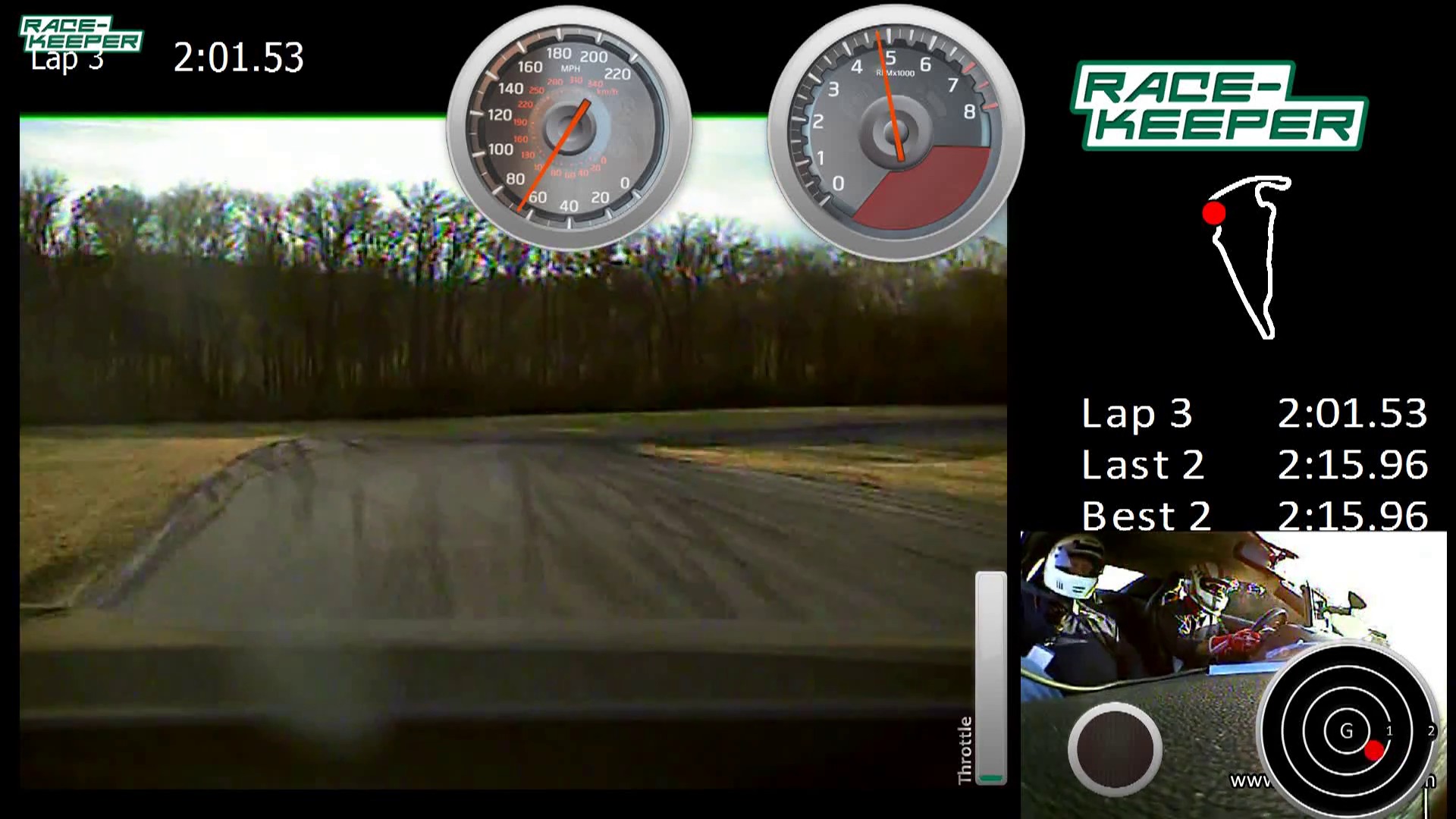 |
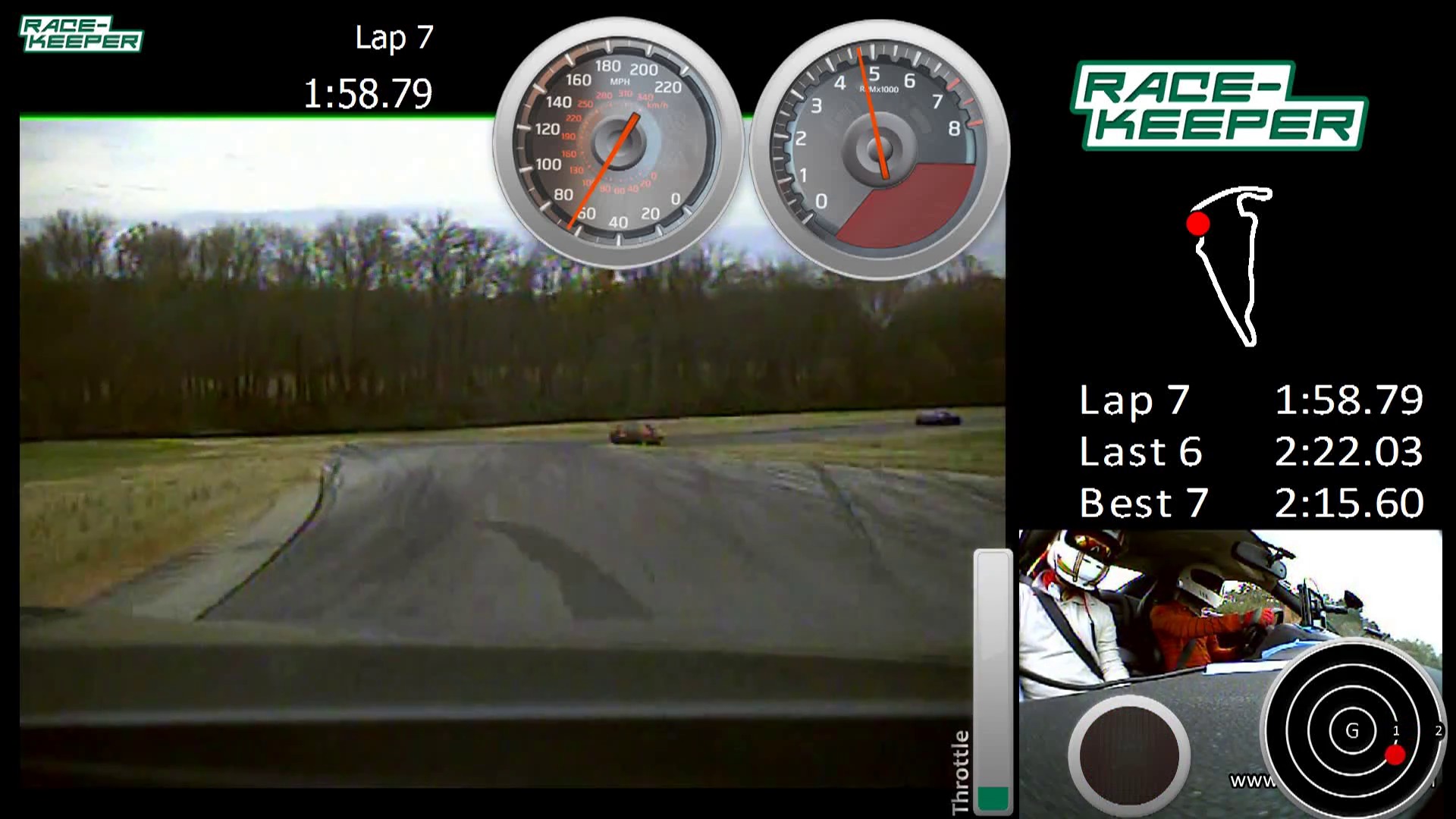 |
The second set of images shows the points at which each driver gets on power. Note that in both cases, the speed is just above the respective driver's minimum speed. It is difficult to tell from the still image but Driver B is getting on power about one turn earlier than Driver A in terms of track position (between turns 16 and 17 rather than 17 and 17a).
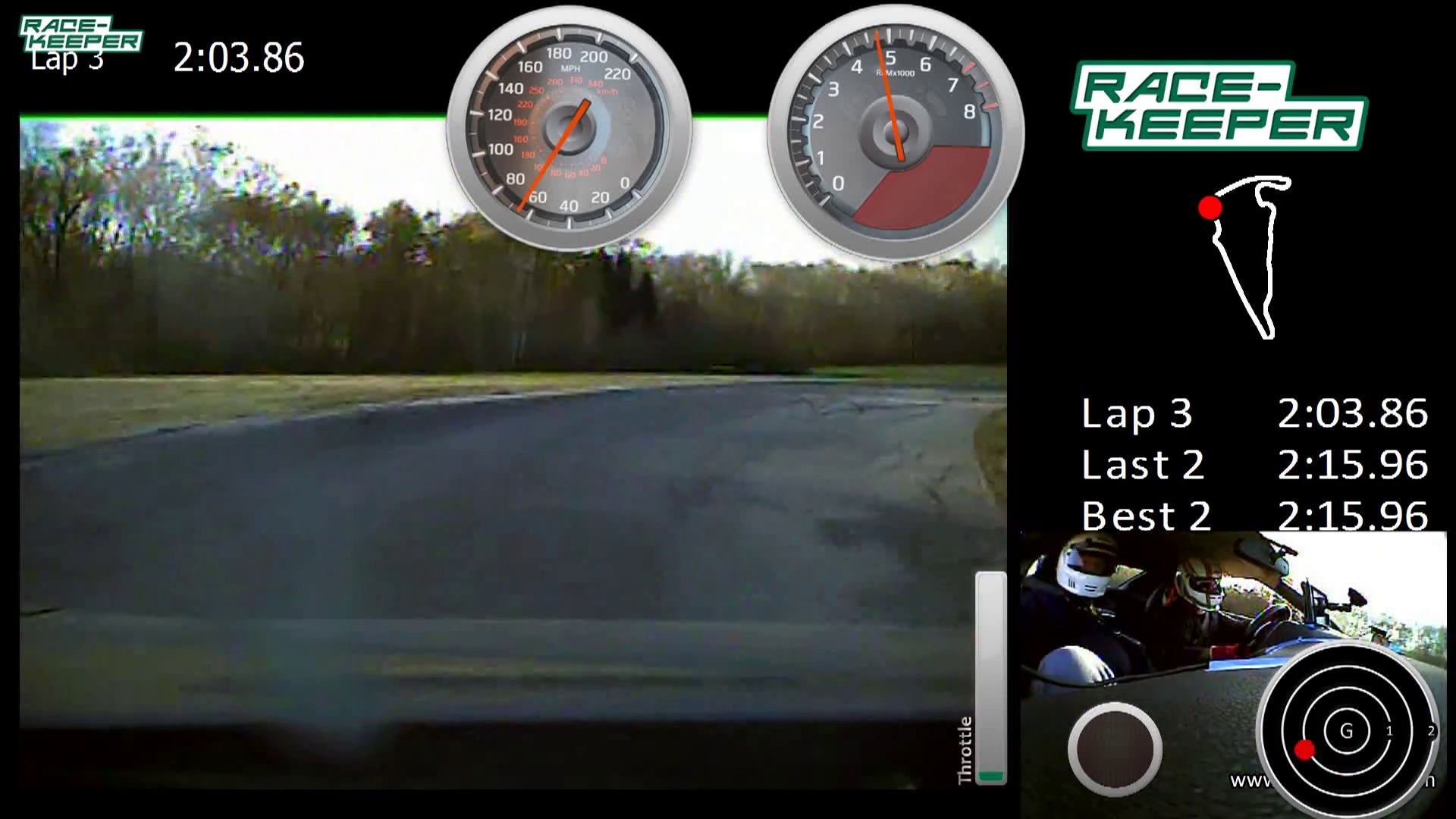 |
 |
Driver A lifts several times through the remainder of Hog Pen. The point at which Driver A applies full throttle is actually the following:
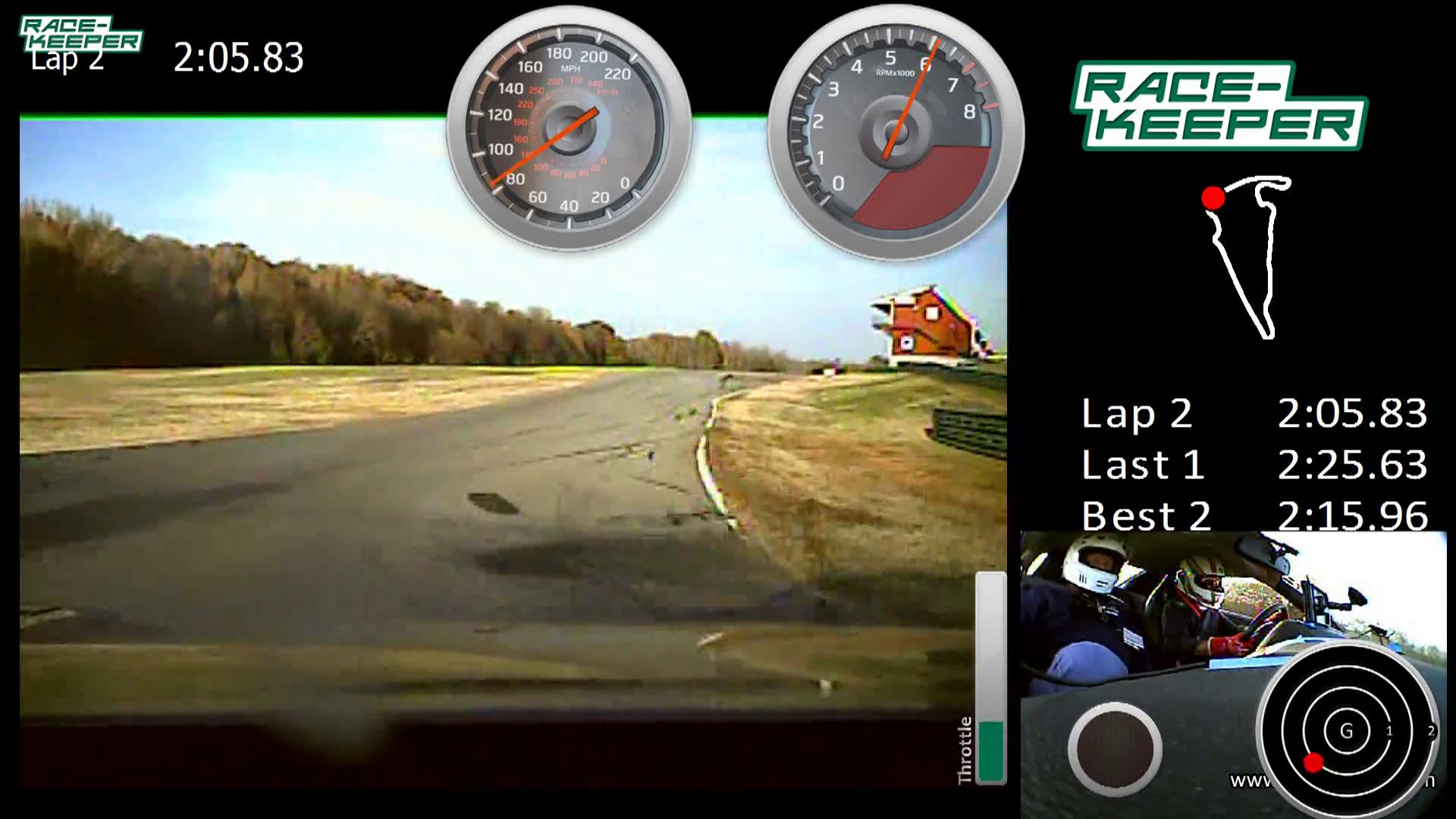 |
In contrast, Driver B applies increasing throttle through the entire exit. At track out, Driver B moves about 5 mph faster than Driver A (97 mph rather than 92 mph).
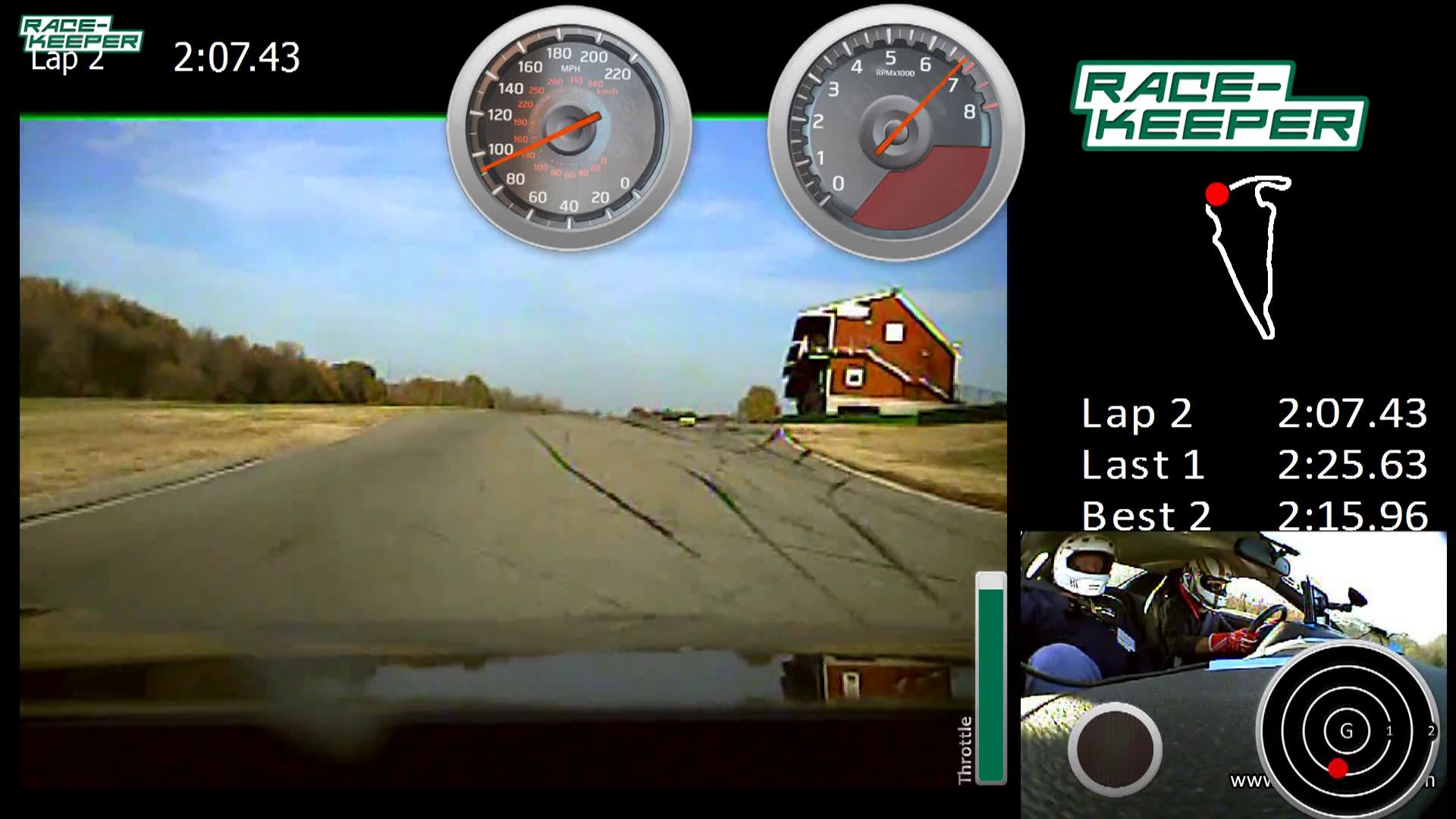 |
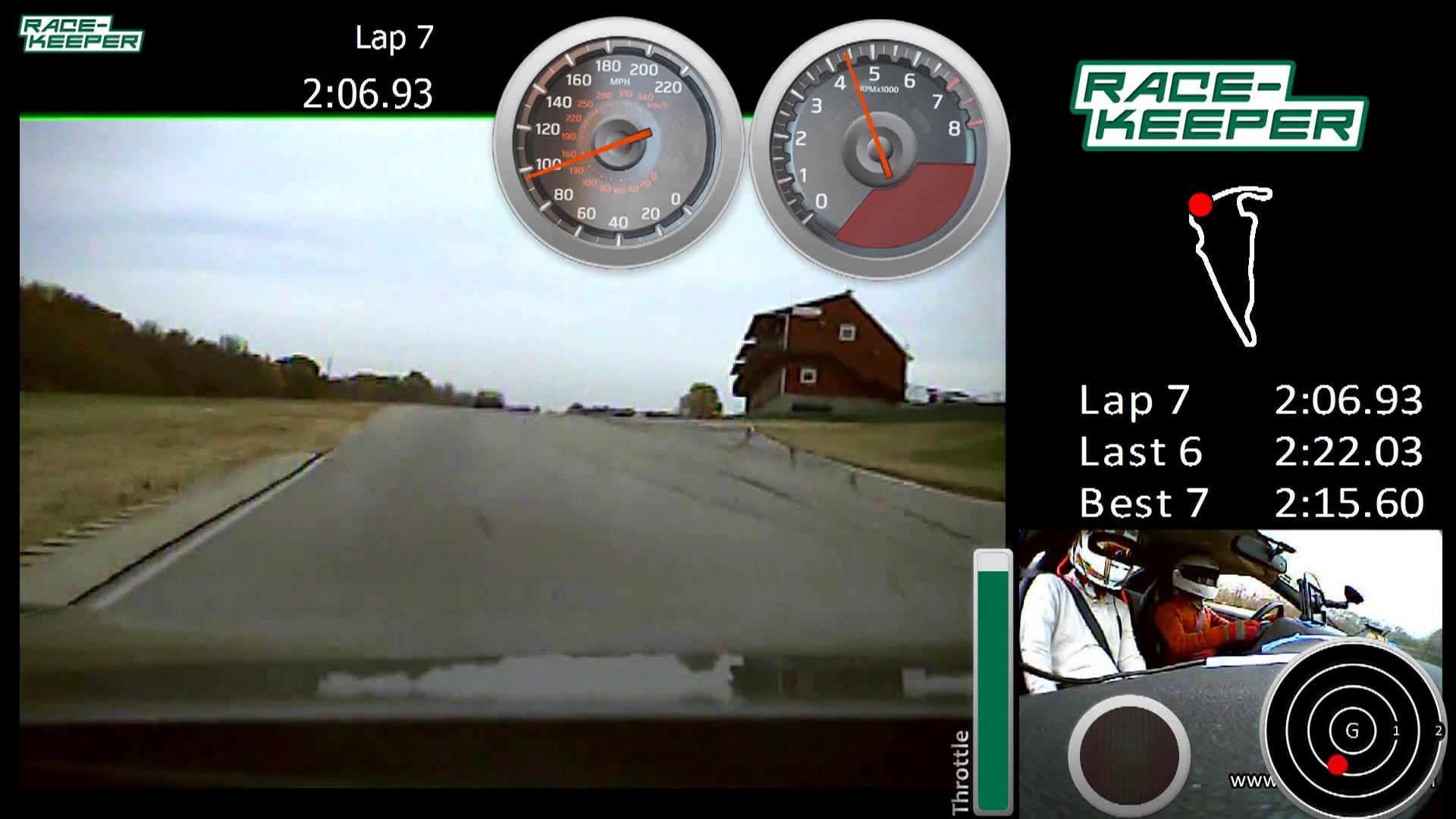 |
If you review the two videos again, you will notice that Driver B generally stays in a higher gear throughout the course, thus using less power to accelerate. Driver B also begins braking earlier than Driver A and as a result achieves lower top speed. Yet Driver B runs almost identical lap time to Driver A; the time that Driver B gives up in braking zones is for the most part made up by Driver B beginning to accelerate sooner than Driver A does.
Getting On Power And Unwinding Steering
When you are accelerating out of corners, you should unwind steering first and add throttle second. More on that on the leading with steering page.
Further Reading
For a more thorough look at executing the power phase of a corner wrong, see Accelerating From Turn In and Lifting (Off Power) Past Apex sections of Self-Evaluation Examples.
Beyond Corner Exit Speed
Corner exit speed alone is not the holy grail of lap times. After you are able to extract respectable exit speeds out of all corners, the next thing to concentrate on would be maintaining high minimum corner speeds, without compromising corner exit speeds. This requires a marked increase in concentration because you must effectively keep twice as much information in your head at once (mid corner and corner exit).
Throttle Application In Racing
The preceding discussion applied primarily to HPDE and time trial drivers. Throttle application strategy changes a bit when wheel to wheel racing is involved.
The basic principle is the same - if two cars come out of a corner side by side and nose to nose, the car with the higher speed at that moment will start getting ahead of the other car, eventually resulting in a pass. Therefore, when racing wheel to wheel it is often crucial to begin applying throttle earlier than the car next to you does.
The difference between wheel to wheel and HPDE/time trial style driving is in a wheel to wheel situation each car limits track position options of the other car. For example, when car B follows car A going into a corner, with both cars being identical, a common tactic for car A is to overslow a bit during corner entry which moves its throttle application point earlier on track. Car A is traveling through the corner slower than optimally, however car B is not able to pass car A if the overslowing is small (car B taking an outside line would require car B to travel so much more distance than it would lose time compared to the slightly slower speed of car A on the preferred line). At mentioned, car A is able to accelerate a bit earlier than if it took the corner on the fastest line; if car B begins to accelerate at the usual throttle application point, car A would have a higher exit speed and would pull away from car B on the following straight. Car B has no choice but to modify its own line, braking and throttle inputs to begin accelerating at the same point where car A begins accelerating. This scenario happens all the time in Spec Miata races, with the consequence being very early throttle application - sometimes just past the turn in point - in many corners. While this isn't always the fastest way around the track, it is the most effective way to maintain the lead.
If cars A and B are not identical, or if there is a wide disparity of skill between the drivers, the chasing car may intentionally fall back while approaching the corner to create a larger gap from the leading car. The chasing car would then apply throttle earlier than the leading car coming out of the corner, giving the chasing car higher exit speed and allowing it to pass the leading car. This is a classic corner exit pass.
-
By a typical corner I mean something like a 90 degree corner like those typically drawn in classrooms which requires nontrivial braking as well as significant direction change. ↩
Tagged: novice, intermediate
 Visit our
Visit our